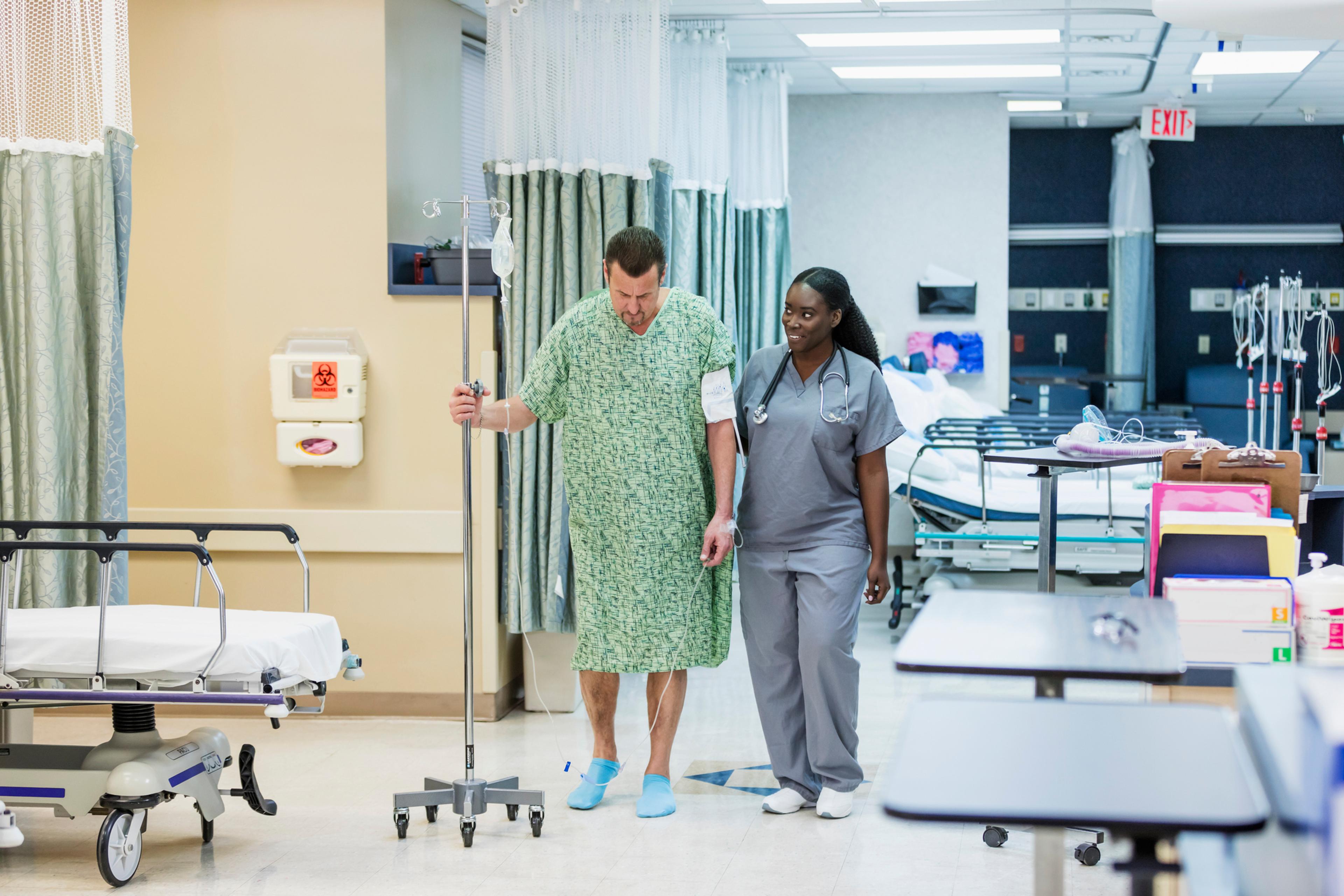For Best Results After Spine Surgery, Get Moving As Soon As Possible
Debbie Reinheimer
| 3 min read

The idea of getting up and moving around less than eight hours after a back or neck surgery might seem unpleasant, even risky to many patients. Yet, a recent study published in Neurosurgery shows that this movement is not only safe, but associated with better outcomes after surgery.
The study comes from the Michigan Spine Surgery Improvement Collaborative (MSSIC), a Blue Cross Blue Shield of Michigan-sponsored Collaborative Quality Initiative (CQI) focused on improving spine surgery quality of care and outcomes in the state.
The surgical community continues to advocate for ambulation – the act of mobilizing the body or walking – as a way to aid in the recovery process. Surgical teams have adopted guidelines for Enhanced Recovery After Surgery (ERAS) that include mobilization within 24 hours after surgery.
Some surgical teams promote ambulation within six to eight hours after surgery. Yet, there has been little evidence to support this early ambulation as a universal practice after elective spine surgery.
Digging into the data
Participants in MSSIC realized they had a trove of data that they could analyze that may provide needed evidence. MSSIC is a collaboration among 185 neurosurgeons and orthopedic surgeons in 27 hospitals and 3 ambulatory surgery centers across Michigan. Participating hospitals contribute patient data to a central registry, resulting in a rich, comprehensive set of data that includes cases performed in an array of different settings, with diverse patient demographics and geographic parameters.
MSSIC surgeons examined data from July 2018 to April 2021, from 25,236 patients who had undergone elective cervical or lumbar spine surgery for degenerative disease. They divided 7,647 cervical and 17,616 lumbar cases into three cohorts based on time they ambulated after surgery:
- Less than eight hours
- Eight to 24 hours
- More than 24 hours
The hypothesis was that early ambulation, occurring less than eight hours after surgery, would be associated with better outcomes after surgery.
Results consistent with hypothesis
Since ability to ambulate within eight hours can depend on some patient or surgery characteristics, and is not advised in some cases, the analysis first excluded the “contraindicated” cases and then adjusted for other potential confounding factors. After that adjustment, the surgeons observed that patients who got up and moving within eight hours of surgery had much better outcomes. In comparison, those who walked after eight hours experienced more complications.
Ambulation less than eight hours after surgery was associated with the following outcomes:
- Shorter length of stay in the surgical facility
- Higher discharge to patients’ home rather than a rehabilitation facility
- Higher patient satisfaction
- Lower rates of readmission to hospital within 30 days of the surgery
- Lower rates of urinary retention after surgery
The researchers found that there is minimal risk for elective spine surgery patients to have supervised ambulation within eight hours, and they recommend early ambulation be included in standard protocols for ERAS.
“Because the MSSIC data registry is so comprehensive, and because it includes data from such a wide variety of surgical centers statewide, it offers relevant, significant and representative information that can inform future practice,” said Faris Ahmad, M.D., medical director, Clinical Partnerships at Blue Cross Blue Shield of Michigan. “MSSIC is one of more than 20 statewide Collaborative Quality Initiatives supported and administered by Blue Cross and influencing clinical practice.”





